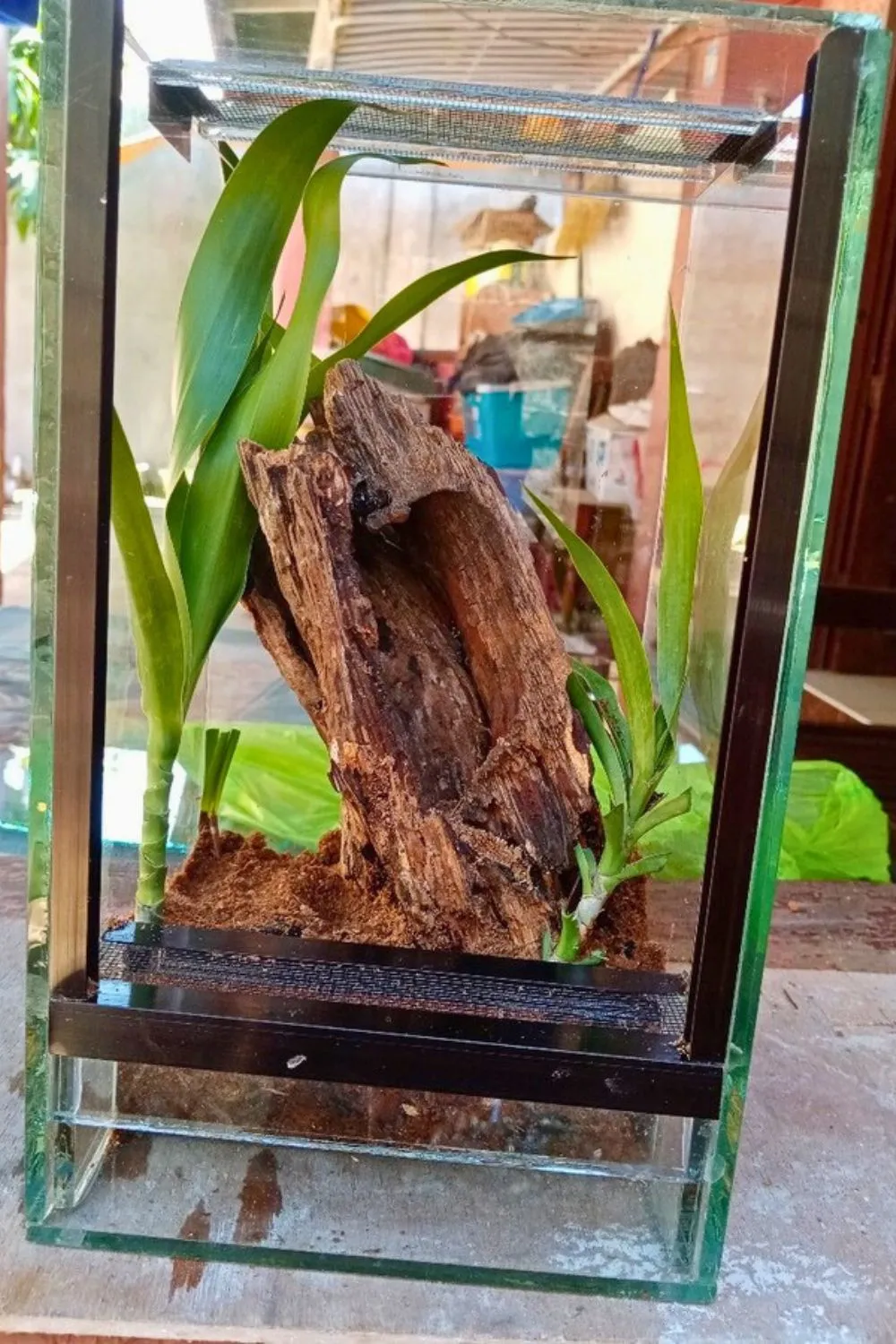Planning Your Bioactive Tarantula Enclosure
Setting up a bioactive enclosure for your tarantula is an exciting and rewarding endeavor. It mimics the spider’s natural habitat, providing a self-sustaining ecosystem that reduces maintenance and enhances the tarantula’s well-being. This guide provides a step-by-step approach, ensuring your tarantula thrives in a healthy and stimulating environment. Before you begin, careful planning is essential. Consider the species of tarantula you’re housing, its specific needs in terms of humidity, temperature, and space, and the materials required to create a thriving ecosystem within its enclosure. This proactive approach will save you time and prevent potential pitfalls later.
Choosing the Right Enclosure Size
The size of the enclosure is paramount for the tarantula’s comfort and safety. A too-small enclosure restricts movement and can lead to stress, while one that is too large might make it difficult for the tarantula to find food and feel secure. Generally, the enclosure should be at least twice the tarantula’s leg span in width and length, and tall enough to allow for burrowing and climbing, depending on the species. Remember to account for adult size when choosing the enclosure, especially if you’re starting with a juvenile. A well-sized enclosure provides ample space for the tarantula to explore, hunt, and establish its territory.
Considering Your Tarantula Species
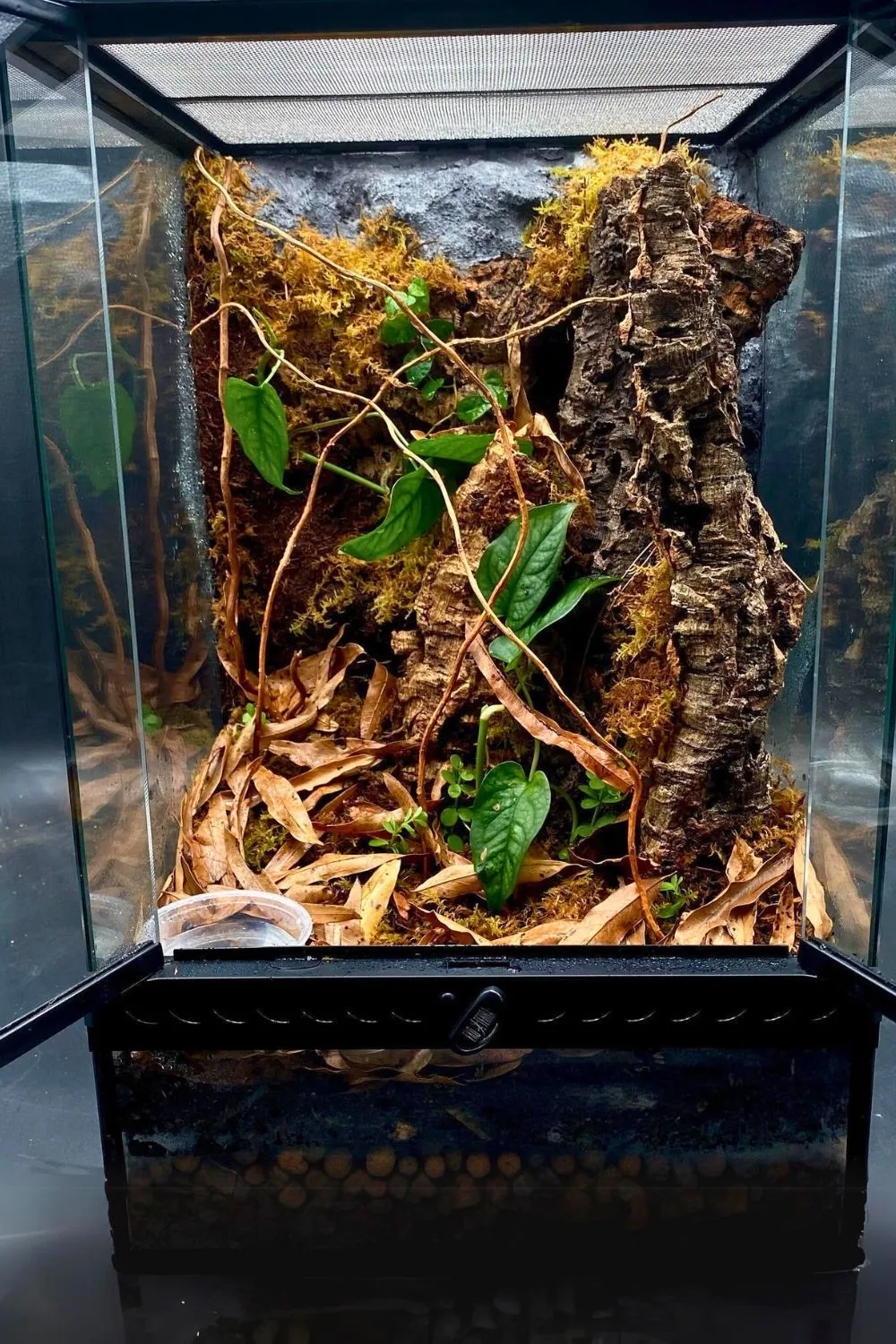
Different tarantula species have different needs. Some species are terrestrial and prefer to burrow, while others are arboreal and enjoy climbing. Researching your tarantula species is crucial for determining the appropriate substrate depth, plant choices, and overall setup. Terrestrial species, for instance, will need a deep substrate layer to facilitate burrowing, while arboreal species will benefit from vertical space and climbing structures. Understanding your tarantula’s natural habitat will guide your enclosure design, leading to a setup that closely mirrors its environmental needs. This consideration encompasses humidity, temperature, and specific dietary requirements which can affect the microfauna you choose to include.
Essential Bioactive Substrate
The substrate is the foundation of a bioactive enclosure, supporting the plant life and providing a medium for microfauna to thrive. A well-constructed substrate mimics the natural environment of tarantulas and ensures that waste is broken down. It’s also key to maintaining the correct humidity levels and temperature gradients. Avoid using materials that are toxic to the tarantula or the microfauna. The best substrate should retain moisture, allow for burrowing, and provide nutrients for plants.
Substrate Components and Ratios
A good bioactive substrate typically consists of several key components. A base layer of organic material like peat moss, coconut fiber, or sphagnum moss provides moisture retention. This can be mixed with other components like organic topsoil, which adds nutrients for plants, and play sand to improve drainage and aeration. The exact ratios depend on the species and the plants you intend to keep, but a common mixture is 40% organic matter (peat moss or coconut fiber), 40% topsoil, and 20% play sand. Adding leaf litter will help with the decomposition process, creating a rich substrate.
Drainage Layer Construction
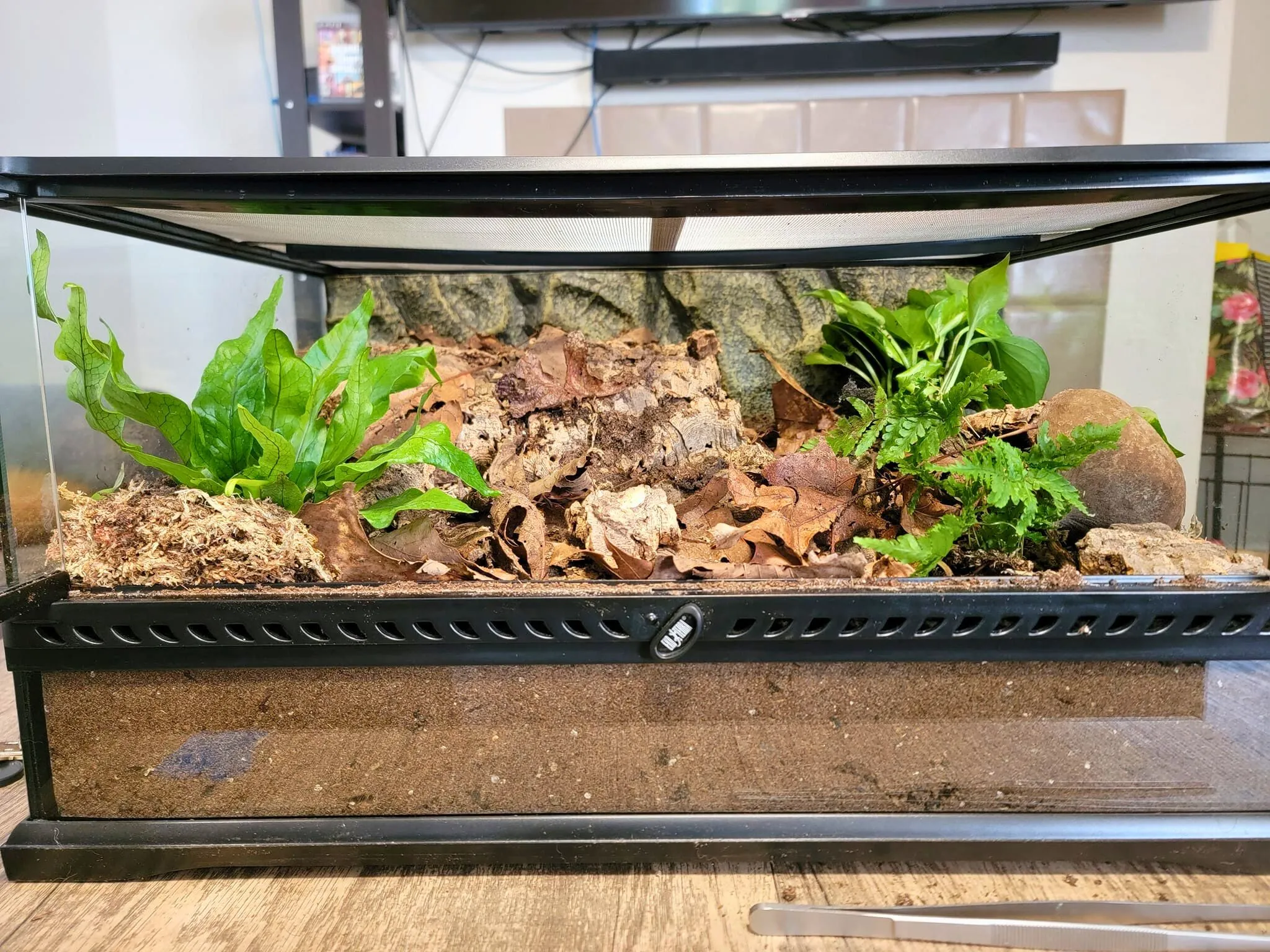
A drainage layer prevents the substrate from becoming waterlogged, which can lead to mold and bacterial growth, harming the tarantula and microfauna. This layer, placed at the bottom of the enclosure, can be constructed from materials like lava rock, aquarium gravel, or expanded clay pellets. It is essential to separate the drainage layer from the substrate above, using a mesh screen (landscape fabric works well). This prevents the substrate from seeping into the drainage layer and ensures effective water drainage. The drainage layer allows for water to be stored and reabsorbed into the substrate, ensuring consistent humidity levels for the tarantula and the plants.
Adding Microfauna to Your Bioactive Enclosure
Microfauna are the unsung heroes of a bioactive enclosure. They are tiny creatures that break down waste, control mold, and aerate the soil. These tiny organisms play a crucial role in maintaining the ecological balance of the enclosure and also provide a supplemental food source for your tarantula. Adding microfauna sets the stage for a self-sustaining environment, reducing the need for frequent cleaning and maintenance.
Benefits of Microfauna for Your Tarantula
Microfauna offer several benefits. They consume decaying organic matter, including feces and uneaten food, preventing the buildup of harmful bacteria and mold. They also help aerate the substrate, improving drainage and oxygen flow. Some microfauna, like springtails, also serve as a food source for the tarantula. The presence of microfauna makes the enclosure cleaner, healthier, and easier to manage, providing an environment that naturally controls waste. They also contribute to the overall health and well-being of your tarantula.
Types of Microfauna
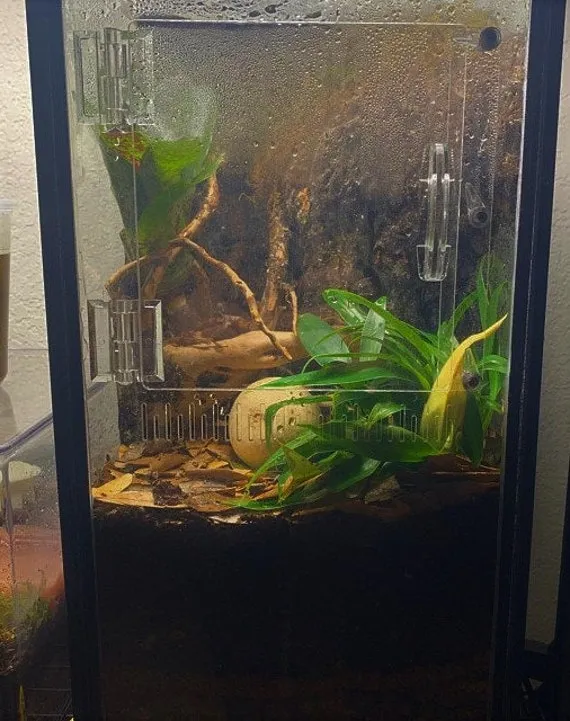
Common microfauna used in bioactive enclosures include springtails and isopods. Springtails are tiny, wingless insects that thrive in humid environments and feed on mold and decaying matter. Isopods (also known as pillbugs or woodlice) are larger, more active decomposers that also help to aerate the soil. Both are generally harmless to tarantulas but are excellent cleaners. The choice of species can depend on your specific preferences, but a combination of springtails and isopods is an excellent starting point.
Adding Plants and Decor
Plants and decor not only enhance the visual appeal of the enclosure but also contribute significantly to the tarantula’s well-being. Plants help maintain humidity levels, provide hiding places, and improve air quality. Decor, such as cork bark, rocks, and artificial plants, allows the tarantula to feel secure and enrich its environment, allowing it to exhibit natural behaviors.
Selecting Appropriate Plants for Your Setup
Choosing the right plants is crucial for a bioactive enclosure. Select plants that thrive in humid environments and tolerate low light conditions, as tarantulas prefer dimly lit spaces. Good choices include low-light plants like Pothos, bromeliads, and certain types of ferns. Ensure the plants are non-toxic to tarantulas and do not have sharp leaves or thorns. Before introducing plants, clean them thoroughly and quarantine them for a few weeks to ensure they are free from pests and diseases.
Arranging Decor for Tarantula Safety and Enrichment
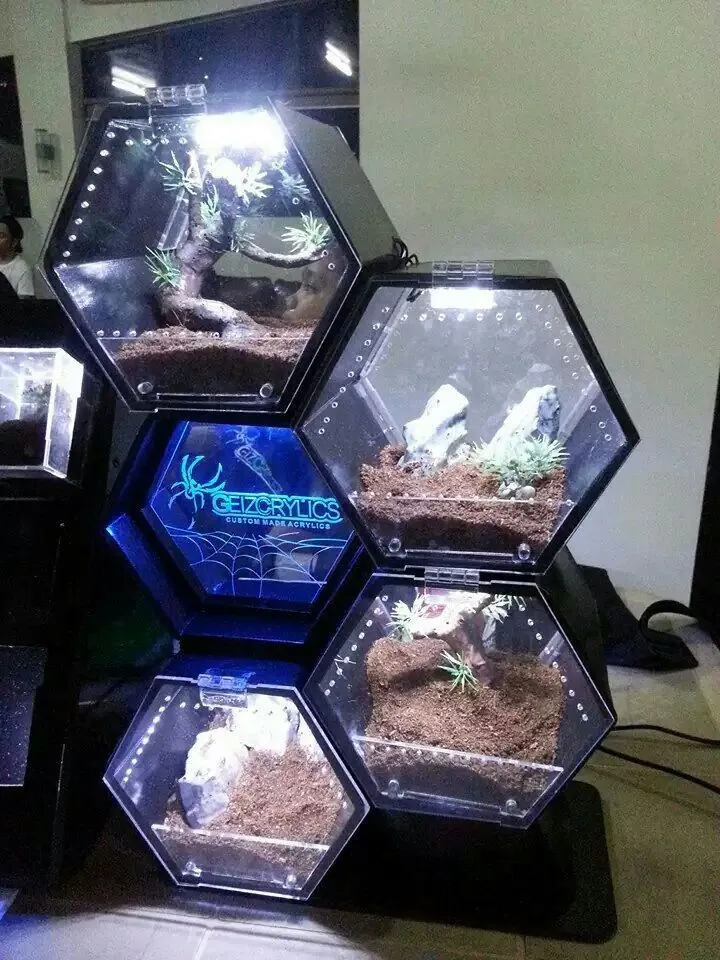
Decor should provide hiding places, climbing opportunities (for arboreal species), and enhance the enclosure’s aesthetic appeal. Cork bark is a popular choice, providing excellent hiding spots and climbing surfaces. Rocks, artificial plants, and driftwood can also be added, ensuring they are stable and do not pose a risk to the tarantula. Arrange the decor to create a naturalistic environment that mimics the tarantula’s natural habitat. Consider the tarantula’s behavior and habitat preferences when arranging the decor to maximize the enclosure’s functionality.
Setting Up the Bioactive Environment
Once the substrate, microfauna, plants, and decor are in place, it’s time to set up the environment. This involves managing moisture, humidity, temperature, and lighting to create the optimal conditions for the tarantula and the bioactive ecosystem to flourish. Monitoring these elements is vital to the success of the bioactive enclosure and the health of your tarantula.
Moisture and Humidity Control
Humidity is a critical factor for tarantula health, with different species requiring varying levels. You can achieve this by misting the enclosure regularly, usually once or twice a week, or by using a drip system. The substrate should be moist but not waterlogged. Use a hygrometer to monitor humidity levels. Ventilation is also important to prevent the growth of mold and to ensure the tarantula can breathe comfortably. Ensure that the enclosure has adequate airflow to maintain the correct humidity levels.
Temperature Regulation
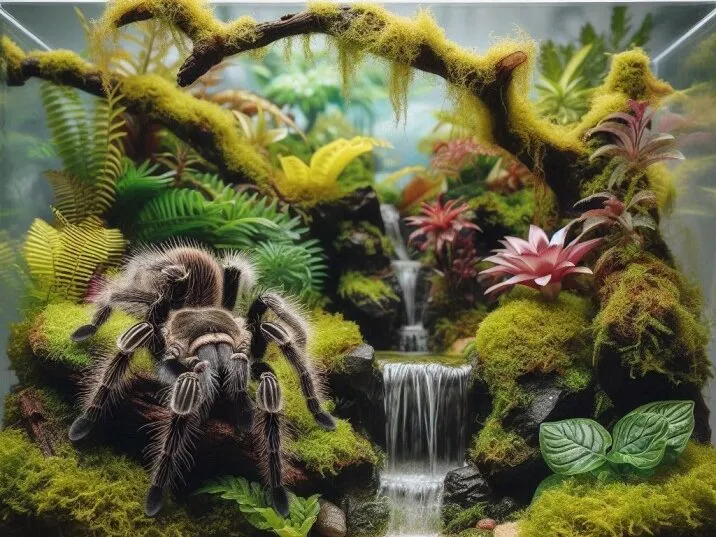
Tarantulas are ectothermic animals, meaning they rely on their environment to regulate their body temperature. The ideal temperature range varies depending on the species but is generally between 75°F and 85°F (24°C and 29°C). Use a thermostat-controlled heat source, such as a heat mat or ceramic heat emitter, to maintain a consistent temperature. Place the heat source on one side of the enclosure to create a temperature gradient, allowing the tarantula to move between warmer and cooler areas. Always monitor the temperature with a thermometer to ensure it stays within the safe range.
Lighting Considerations
Tarantulas generally do not require special lighting, as they are nocturnal creatures and are sensitive to light. Excessive light can stress the tarantula. A low-wattage LED or UVB bulb can be used for the plants, but ensure it does not overheat the enclosure. The lighting schedule should mimic the natural day/night cycle, with a 12-hour on/off cycle. Avoid direct sunlight, which can overheat the enclosure. This setup will provide enough light for plants while ensuring your tarantula feels safe and secure.
Maintenance and Monitoring
Once the bioactive enclosure is set up, ongoing maintenance is required to ensure it remains healthy and self-sustaining. This involves regular watering, spot cleaning, and monitoring the ecosystem. The goal is to create a balance that requires minimal intervention while ensuring the well-being of your tarantula and the health of the enclosure.
Watering and Spot Cleaning
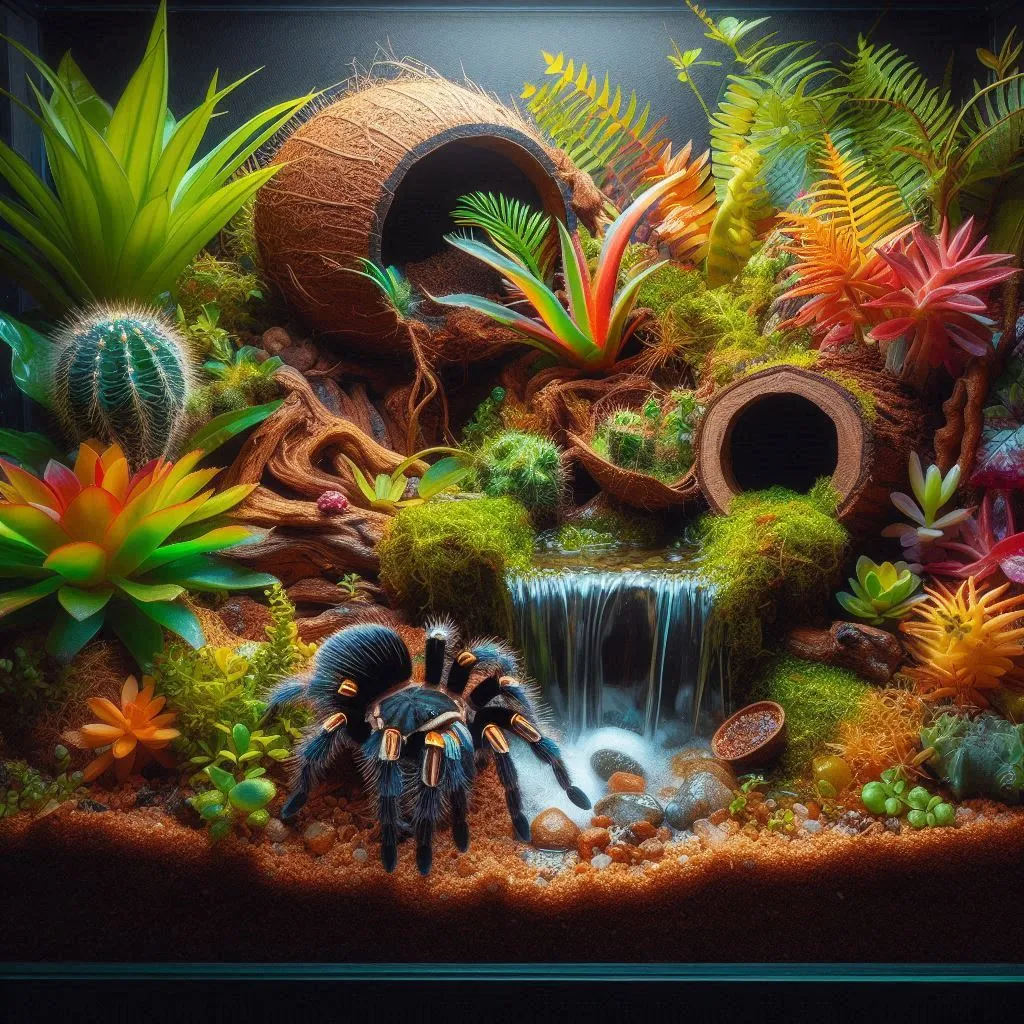
Watering frequency will depend on the tarantula’s species and the plants in the enclosure. The substrate should be kept moist, but not waterlogged. Spot clean the enclosure regularly by removing any uneaten food or waste products that the microfauna may have missed. Regular maintenance is crucial for preventing mold and maintaining a healthy ecosystem. The combination of microfauna and spot cleaning minimizes the amount of work required to maintain a bioactive enclosure.
Monitoring the Ecosystem
Regularly observe the enclosure for any signs of problems. Check for mold, pests, or changes in humidity or temperature. Ensure the microfauna population is thriving. The health of the plants can also be monitored by looking at any changes in the leaf color or growth. A healthy ecosystem will maintain itself, with microfauna breaking down waste and plants providing oxygen and humidity. Addressing any issues early will prevent them from escalating and ensure the long-term health of your tarantula.
Troubleshooting Common Issues
Even the best-planned bioactive enclosures can experience issues. Common problems include mold growth, pests, or insufficient humidity. If you notice mold, increase ventilation and remove any affected material. If pests appear, identify the source and address it promptly. Adjust humidity levels as needed to maintain a healthy environment. Regular monitoring and prompt intervention can prevent these issues and maintain a thriving bioactive enclosure. Taking swift action when issues arise is critical to maintaining a balanced ecosystem.
